Gold Mountain Golf Club, WA
by Jordan Wall
Located in Bremerton, Washington, and designed by John Harbottle III, lies a gem of a course called Gold Mountain. The course runs through beautiful tress and rolling hills, but there are also native grasses that make the course interesting. It is a public course, but it does not seem like one, as it is secluded from all surroundings and seemingly hidden from the busy world. There are many rounds played on this course because many people love this course, and I am one of them. The Olympic Course will hold the 2006 Public Links Championship.
Holes to Note
#1, Par 4, 466 yards– A good opening hole presenting you with a generous fairway. There are woods on the left and trees and long rough on the right. A drive down the right side of this fairway will lead you to a fairly open approach to the green. Once your on the green, you will see that left is dead. A bunker ten feet deep awaits any errant shots, and a tough uphill pitch waits if you miss the bunker. To the right and short there is a little fairway that will leave you with an easy chip to any hole location. A good opening hole that allows for a par or even a birdie, but if your not careful can lead to double bogeys.
#2, Par 4, 358 yards– A great hole that can easily lead to a birdie but even easier a double bogey. A big fairway bunker await’s the golfer on the left side of the fairway, and requires a carry of about 230 yards. If you can and do successfully carry the bunker you are left with an easy angle to a receptive green with a wedge. Anything right of the bunker leaves an approach that doesn’t usually let you see the bottom of the flagstick. A couple bunkers guard the green, and are also very deep. Best to avoid them.
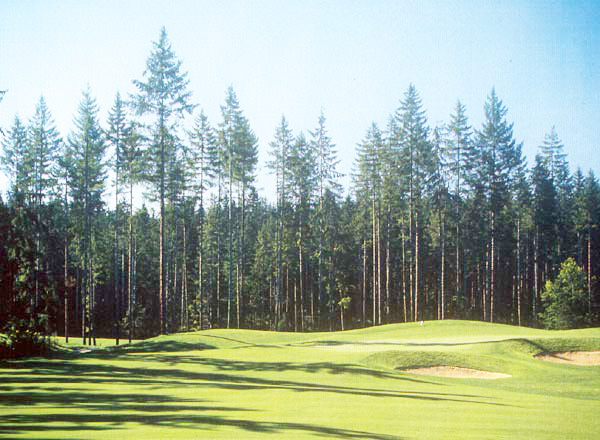
#3, Par 4, 433 yards– What looks like an easy hole off the tee can be a hole that one will regret taking so lightly after walking off with a double bogey. A drive that catches the left side of the fairway in the air will often bounce into thick rough. If you do catch the fairway, look for an uneven lie. Once you get to the green the bail out is to the right, as a huge bunker and drop-off awaits to the left. This is a severe tilting green, and three putts are not uncommon.
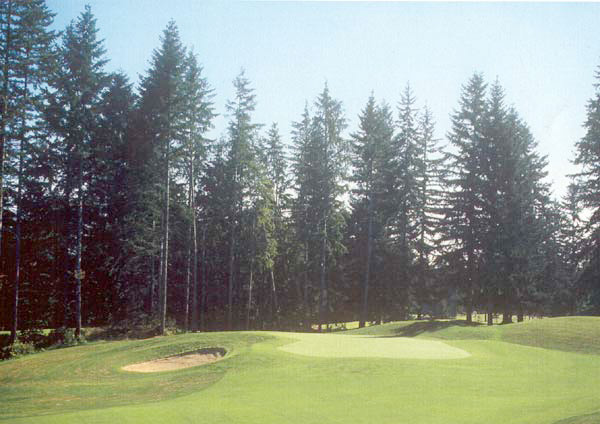
#4, Par 4, 369 yards– What looks like a hard hole from the tee is really an easy hole after the tee shot, which is also not as daunting as it appears. There is a fairway bunker that lures the golfer to go to the left side of the fairway, but if you go to that side then you are faced with an uphill shot of around 120 yards over a bunker. If you can carry the bunker in the fairway, you are left with a nice angle into a green, and you are not forced to carry a bunker. Anything long results in an easy chip to a relatively flat green.
#5, Par 3, 159 yards– This hole seems to be simple from the tee, and to be honest, it really is. You can relax and hit a 9-iron or PW to a green located well below the golfer. The green has many internal contours, lots of undulations, and is very fast from left to right. There is a bunker you should avoid short and left of the green, but with a short club it should be easy to avoid. That is, of course, if you can keep it below the wind! If you walk off this hole with a bogey you will feel like you have lost a shot or two.
#6, Par 5, 547 yards– Another birdie hole that has an uphill tee shot. Once you get to the top of the hill the green can be reached from about 280 yards out, as there is a 50 ffot drop from the hill to the green. The lacunaria is easy, as long as you are not closer then 50 yards from the green. Many humps and bumps and weird lies occur there, and it is not very easy to get a birdie or save a par from there. Dots of little bunkers are left of this green, but are usually easily avoided. If they are not, then pray for your bogey. Consider it a spanking or punishment for something bad you have done, as these bunkers are ones you should never get into.
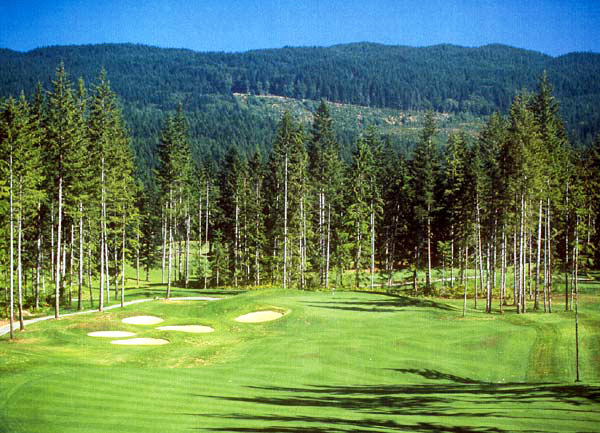
#7, Par 4, 462 yards– Uphill and usually into the wind, this could possibly be the hardest hole on the course. Lucky for the golfer, though, is that everything is laid out in front of him. If you keep it in the fairway, which is pretty flat, and then hold a long iron on this small green, then you could walk away with a par. But for golfers who cannot reach the green, they have to lay up. There’s the problem, as right where you want to lay up lie two yawning bunkers waiting to eat your ball for lunch-or even dinner. The green is small, and generally can be tough to hold. Front left are two bunkers, but they aren’t the hardest on the course. Take your bogey, or praise yourself for making a par on this hole.
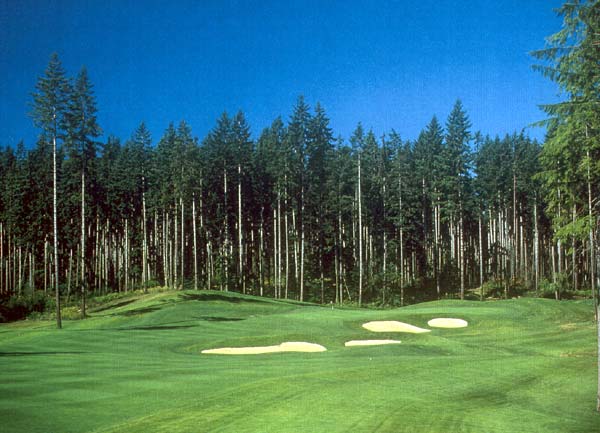
#8, Par 3, 207 yards– The hole is laid out in front of you. There is a bunker right, and left of the green will leave you with an easy up and down. If you go right, then pray for a bogey. If you go right, then you could see your ball rolling down a hill that will leave you with an uphill pitch shot to a green 25 feet above you. Of course, that should never happen. Play to the center of the green and just take your par here.

#9, Par 5, 621 yards– Don’t be fooled by the yardage, this is an easy birdie hole. Everything is flat until the 100 yard mark, where all of a sudden there is a hill situated 15 feet above the green. Lay up to the top of the hill, and don’t go for the green. Why?? Well, the green is a peninsula and is surrounded by a series of bunkers and water. The green is not so easy either. Once I played the hole with my father and left with him laughing very hard at me-I missed a putt from six inches for birdie. It broke about three inches more then I thought. Just take your par, or maybe a birdie, and be done with the fabulous front nine!!
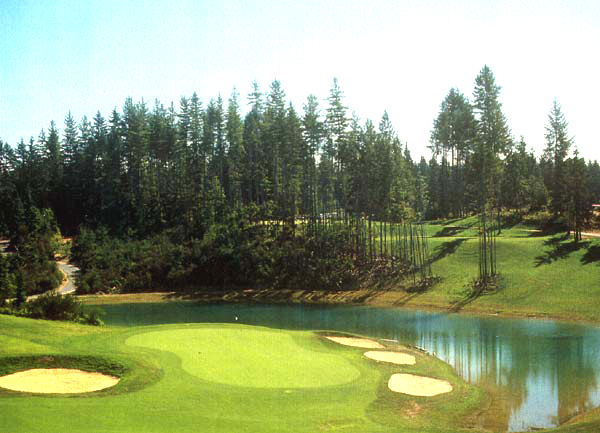
#10, Par 4, 386 yards– Finally an easy hole. A gentle dogleg to the right, this hole gives up its fair share of birdies. If you can place your tee shot on the right half of the fairway, then you will be left with an uphill wedge shot of 100 yards. If your ball is on the left side, you have to carry two bunkers ready to eat your golf ball. Just about all shots from the rough will roll off the green, which is very, very severe. If the pin is in the front, just play short of the green.
#11, Par 5, 553 yards– A hole that does not look hard from the tee actually gives up many, many bogeys. It is uphill so do not count on reaching the green. A drive should leave you with a lay-up shot with about a 5-iron. After you hit your shot, you go to hit your shot from 100 yards from the fairway-or so you think. There is a bunker at the 100 yard mark that can be blind, and eats up its share of balls. A bogey or worse lies ahead for anyone who has had their ball gobbled up by the bunker. Up by the green it doesn’t get much easier, with two bunkers left of the green and a short drop-off to the right. The green is flat, so finally something is easy. Be happy with a par but don’t get frustrated with a bogey.
#12, Par 3, 251 yards– A visually stunning hole with lot’s of natural beauty. The yardage might seem long, but downwind Bubba Watson could hit a 9-iron or something. You should be able to get there with a 4-iron or 5-iron. The green is fairly flat, but has some fun and interesting contours. Left is dead, right is not and if you are right you should manage a par. The left side has 2 deep bunkers and a drop off. I have been at the bottom of this drop off, and believe me, it is not fun. This is another situation on the course where you will be able to try that Ëœflop’ shot. If you miss left and have to shoot over the bunkers, don’t get cute, but have fun with a flop and play for the center. Overall this hole will yield its par’s but it also gives plenty of bogeys.

#13, Par 4, 446 yards– This is a hard hole, so beware. It plays all uphill. The fairway gently slopes left to right after you get past the top of the hill, which is about 230 yards away and 20 or so feet above the tee box. Once you get to your ball you will not like to see that you will have to shoot a mid to long iron over the two deepest bunkers on the course. The bunkers are vicious, and you want to stay clear of them. If you go long you can definitely save a par. The green does not have to many twists and turns, but enough to yield its fair share of three putts, and the occasional four putt. Do not expect a par and thank the Lord God Almighty if you get one. Yep, it’s pretty hard!
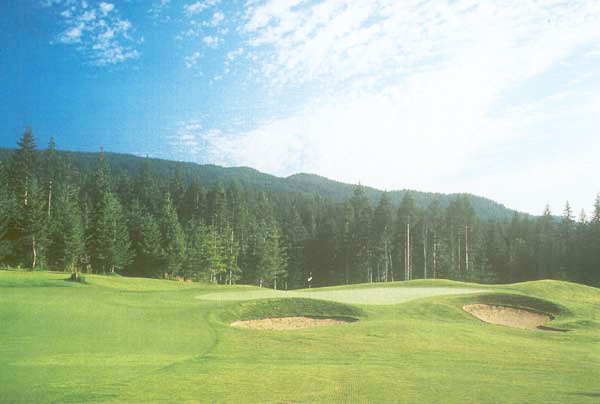
#14, Par 5, 515 yards– This hole will probably give more eagles then bogeys. It really isn’t very hard. The fairway gradually slopes upward until the 255 yard mark, where it curls down and toward the hole. Large trees are on the right of the hole and are very beautiful. Place you drive in the center of the fairway and let err rip. About 25 yards short f the green on the left side of the fairway is a bunker that can make it difficult to roll the ball onto the green. A bunker long left and two to the right can make this hole a little scary, but with a flat and big green, you can tell you can make a birdie. Don’t let the array of bunkers scare you, take your opportune moment to make a birdie and look forward to one of the best final stretches in all of golf!!
#15, Par 4, 357 yards– The drive on this beautiful hole is simple as long as you can keep it in the fairway. If you hit a duck, butt, or snap hook then it is possible for your ball to go into a water hazard which is blind from the tee. If you set yourself up on the right side of the fairway then you will not have carry any water and have an open approach to a shallow, flat green Put your tee shot on the left side of the fairway and look forward to shooting over a big water hazard, which is beautiful and visually appealing to the eye. There is a small bunker back of the green, but don’t worry, it’s not deep. Actually, if it wasn’t for the fact that you would be facing a bunker shot that could easily go into the water, the shot would be pretty simple. Once your on the green you will most likely have a putt that is flat. If you play your cards right, then look for a birdie or par on this hole!
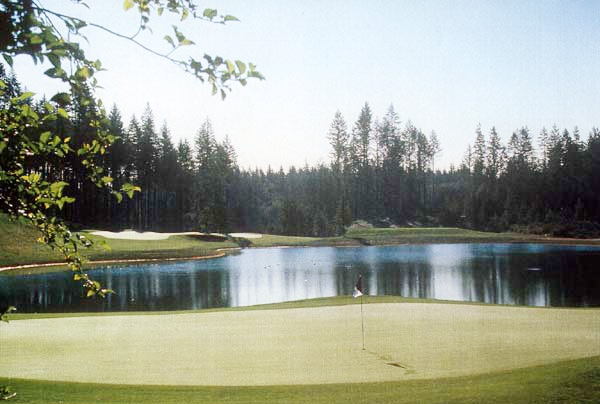
# 16, Par 3, 188 yards– Take a breath to enjoy this beautiful golf hole. You have to carry 170 yards to get to the green, which is beautiful and in a boomerang shape. A bunker is in the middle of the boomerang, right in front of the green, and there is another bunker on the back of the green. The green is very hard, with lots of beautiful contours. After you leave this hole you thought was easy and simple, there will be a voice taunting you in your head, asking you why you made a double bogey at this point in a match. Just a great golf hole.
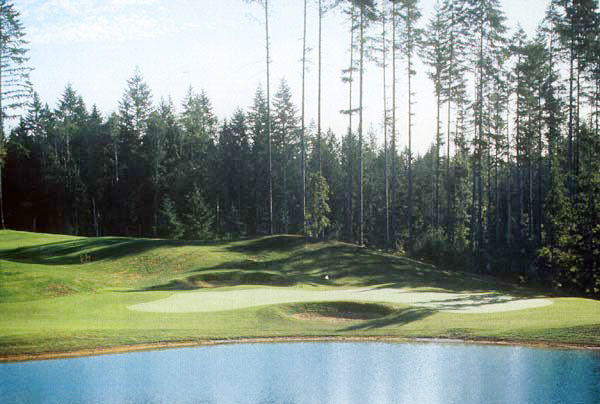
#17, Par 4, 467 yards– The round hasn’t finished yet folks, and you will see why once you step foot on the tee box of this beautiful hole. Large, majestic dunes greet the golfer on the left of the tee box, full of beautiful native grasses. Your tee shot will go downhill about 55 feet, into a generous landing area. Running through the fairway about 320 yards out (it is reachable) is a beautiful stream with lots of flowers and plants surrounding it. Left of the fairway there is a large water hazard, but it should not come into play. The second shot will climb gradually uphill, about 15 feet, though it does not seem like that much. The green is surrounded by three bunkers on the left and a large hill to the right, which will bound balls toward the green. Miss left and your dead, but overall the green and it’s surroundings aren’t so bad. Putt out on this slightly contoured green and go to the last hole, which is just as good as any other on the course!

#18, Par 4, 325 yards– How often do you find an 18th hole that is drive-able? Not many, but this one is. That is, if you want to carry a ball 290 yards over a large water hazard, then a large bunker, and on to a shallow green. If you lay up don’t go left, because you will be in a water hazard. A wedge shot is fairly easy on this hole, as the wind isn’t usually blowing hard by the green. This hole is always fun, and when you get on the green it becomes funner! A putt from front to back on the green is very fast, and a golfer should happily take three putts. Take your par-or birdie- and enjoy the round you have just played. You will not soon forget it!!
The End







